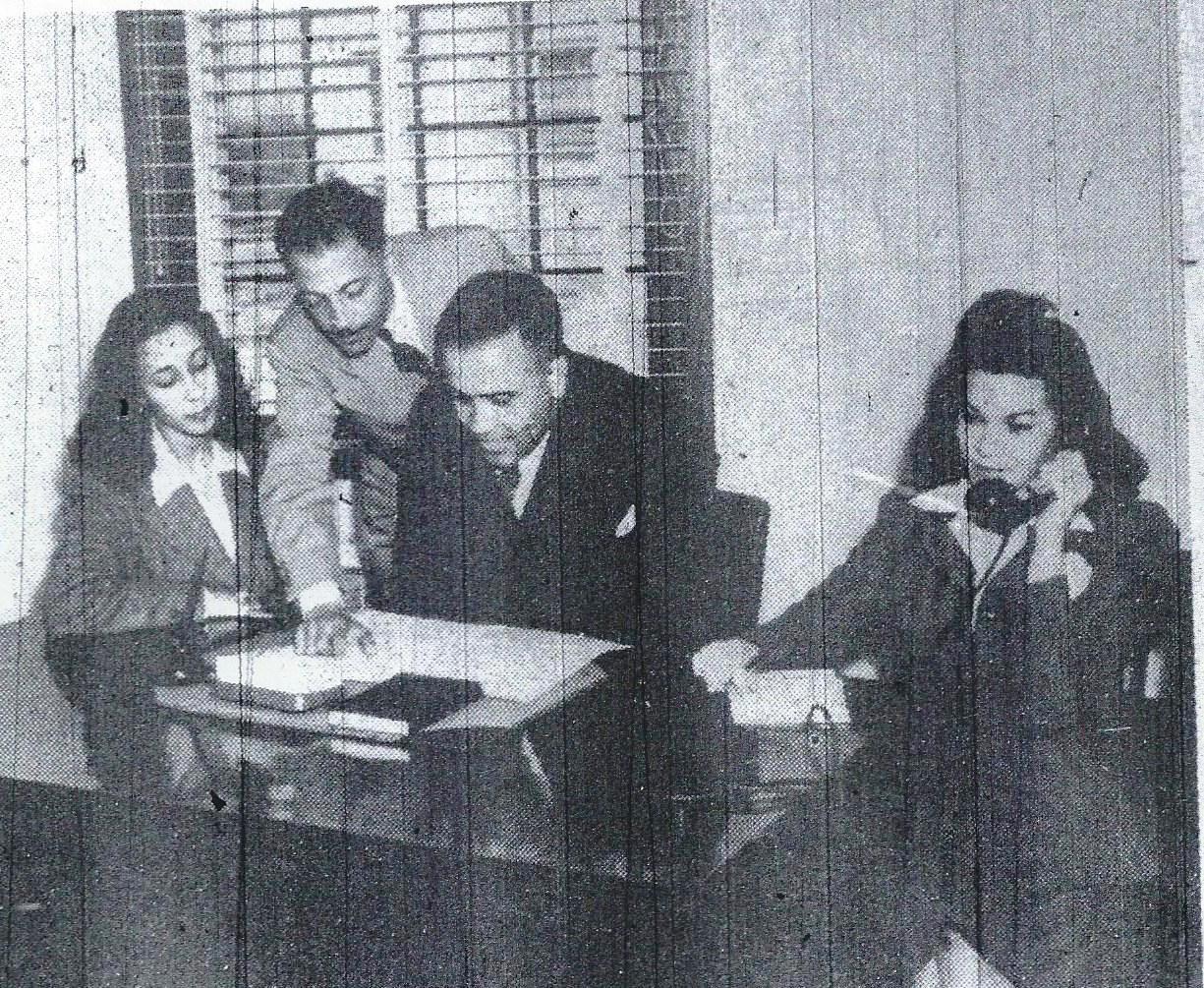The photo above shows the administrative personnel of the St. Bernard Housing Project.
Left to right are: Mrs. Olga L. Thornhill (secretary), Charles J. DeCuir (cashier-bookkeeper), Sheldon C. Mays (project manager), and Mrs. Hermine M. Baham (secretary).
Before receiving these positions, Mrs. Thornhill, 21, graduated from the YMCA School of Commerce, while Mrs. Baham had worked 5 years for the Johnny Hughes Construction Company. Mr. DeCuir graduated from Fisk University and studied at Loyola University of Illinois while Mr. Mays spent three and a half years as an instructor at Gilbert Academy. He started as an investigator and worked his way up to supervisor then cashier-bookkeeper at the Lafitte Project before receiving this position as project manager.
Like the three other low-rent housing units for Negroes in New Orleans (Magnolia, Calliope, and Lafitte), the St. Bernard was managed by an all-Negro staff. Six others worked in the maintenance department. Harold Barrois and William Theard were superintendent and assistant superintendent, respectively, of the maintenance department. The janitorial staff consisted of George Harris, Wilfred Frank, and John Thomas. A sixth person was added to the group later.
The movement to provide better housing for Negroes began in the fall of 1929 when the Institute of Social and Religious Research released data on the crowded, unsanitary conditions and the type of non-weather proof houses in New Orleans’ Negro slums that were largely responsible for the adult and infant mortality rate in the city. In July 1936, the Louisiana Legislature passed Act 275 which provided for the creation of a housing authority in every city in the state with a population over 20,000 people. Finally, at the close of 1938, the U.S. Housing Authority approved the building of six projects- two for whites and four for blacks- which would contain a total of 4,881 dwelling units at a cost of $30,000,000.
The inhabitants living in the sub-standard homes that were torn down to make way for the new housing project were given first preference as residents. Some of the benefits to living in the St. Bernard were: (1) Rent was standardized to correspond with the income of the tenant; (2) Nurseries were set up which enabled working parents to leave their babies in competent hands; (3) Supervised playgrounds eliminated injuries to children who had once played in the streets; (4) Civic activities for children and adults alike were held regularly.
Each dwelling had a living room, kitchen, bathroom, and one to three bedrooms. Each was furnished with an electric refrigerator, gas range, gas water heater, built-in bathtub, combination sink -laundry tray, closet space and a yard to dry clothes in the rear of the building.
Source: The Louisiana Weekly 21 March, 1942 pages 9,10 and 11
L.V.C.




Thanks for sharing, this is a great accomplishment. This was a great move forward because the housing provided better living conditions for African Americans and their families. Luv Auntie Betty Carol Chambers
Thank you so much for this site. The articles are fascinating. In the above article, my father in law’s name is spelled Harold Barras, however the correct spelling is Harold Barrois.
I remember Mr. Harold and his son Larry as well.We lived in the St. Bernard project, I have so many wonderful memories from there.
Monica, Thanks for the great compliment and also for the spelling of the name. It has been corrected.
Thank you. This helps complete my research.